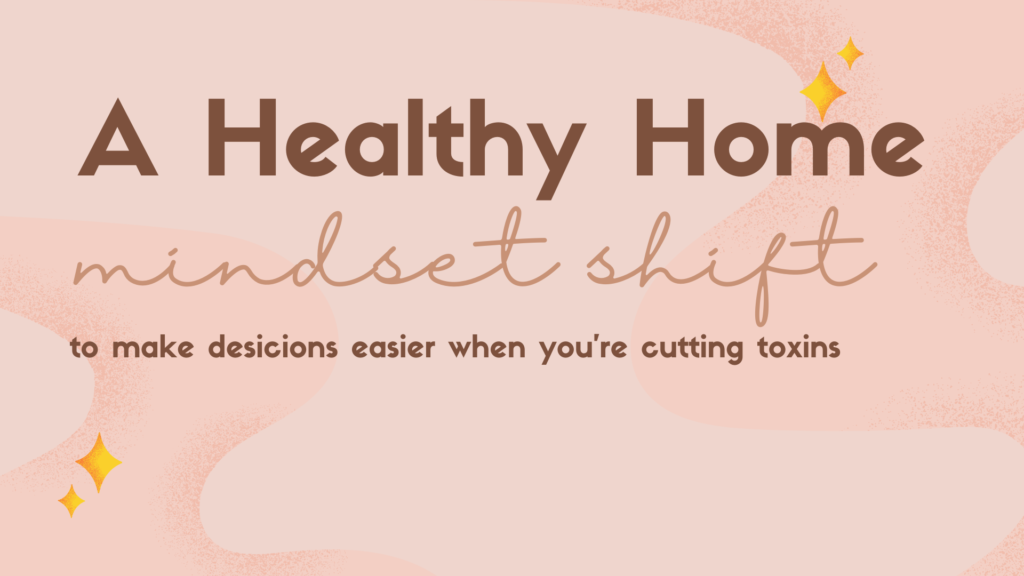
Whether you’ve been creating a healthy home for years or you just started learning about toxins associated with unhealthy homes, it is truly a journey and not an end destination.
And for many of us, myself included, we have to learn to also be flexible with creating a healthy home environment too. We’ve had to learn that some toxins are inevitable and that we can only control so much. And with what we do have control over, sometimes we get decision fatigue. It can be exhausting to try to decide and choose between products for our home.
When it comes to choosing products we use every day or materials and products we bring in for a home project, there’s been this idea that every single thing has to be free from all toxins in order to create a healthy environment. This thought process is not only exhausting, but it just isn’t true.
A healthy home can exist with toxins inside it. You just have to know how to mitigate MOST toxins and you have to understand products will vary from toxic to toxin free — there’s lots of middle ground, and that is okay for your home.

What Is a Healthy Home?
A healthy home is a home area or space that is as free from toxins as possible. Now, toxins can range from toxic house dust containing toxins like formaldehyde to electromagnetic fields in your home. Specifically, a home that is healthy has the following things:
- Very good indoor air quality with high rates of air exchanges happening throughout the day.
- Very little dust inside, or dust is frequently removed from the home
- No active mold growth
- Humidity levels between 35% – 40%
- Low levels of VOCs indoors
- Low radon levels
- No synthetic fragrances being used inside the home
- Properly filtered drinking water
- Products and cleaners that are low in toxins
- Low toxin materials and items inside the home (reduced plastic and vinyl)
- Reduced EMF exposure inside the home
And for each of these ways that a home is healthy, there are a number of steps that go along with it to make that outcome possible.
A healthy home is intended to support our body as it naturally detoxifies the toxins we come into contact with all the time. You see, an unhealthy home becomes problematic when our bodies cannot get rid of the toxins we are exposed to fast enough. The toxins at this point will build up in our body, sticking around, wreaking havoc, until we can detoxify them.
But our body naturally detoxifies at a certain pace, and we can’t over expose ourselves and outpace our body. A toxic home and space can cause severe cases of body burden, disrupt our hormones and weaken the immune system.
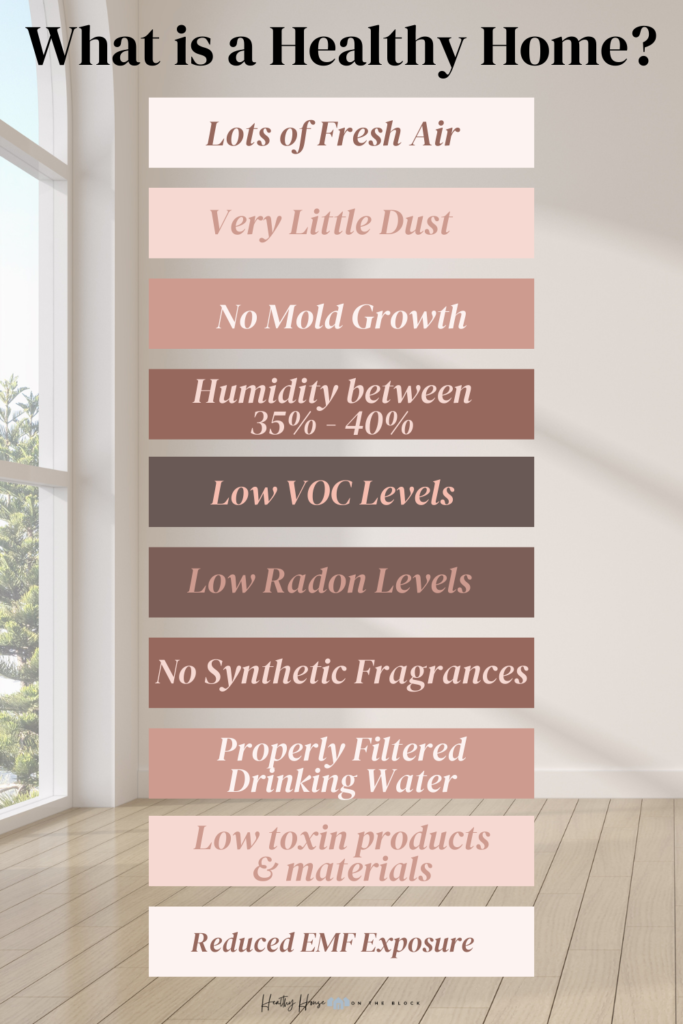
A Healthy Home is Subjective
One thing to remember is that my healthy home is an environment that is healthy for me and my family. Your healthy home might look entirely different. Some of us are extremely sensitive to VOCs, and others of us need to take special care when it comes to preventing mold and mildew as they have a bigger impact on us.
Another thing that families often have to weigh out is the benefit of a toxin free item and if it will cause any stress financially. Financial stress is toxic to our bodies, and so some homes may choose a lower toxin option rather than toxin free due to that reason.
It’s just like our eating habits, some families may be strict and strive for completely toxin free products and a space that is as free from toxins as possible. Other families may be okay with semi-toxin free. They’re flexible with their space and don’t find it necessary to cut out every single toxin.
No matter where you fall, just know that even by reducing SOME toxins, you’re doing your body a favor and you’re setting yourself up for a healthy future.
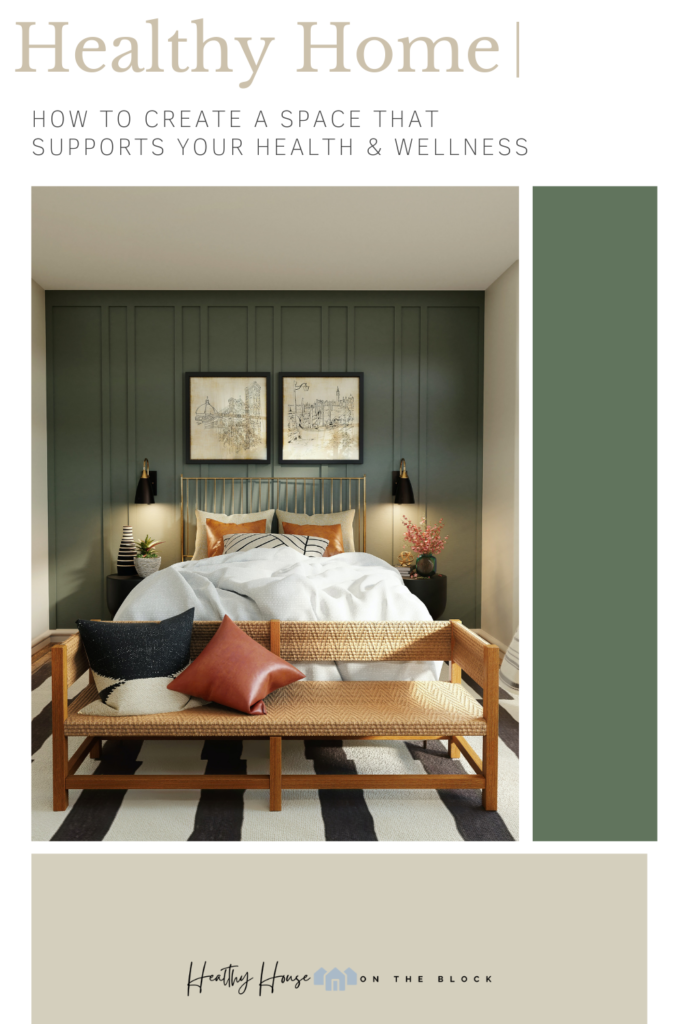
And this is where we come to this idea that whatever we bring into our home has to be totally free from all toxins. And the belief that anything with toxins is something we should be worried about or scared of is a toxic way of thinking in and of itself.
While obviously we strive to reduce toxins as best we can, there is something to be said for being scared of any toxins that might be in your space. Toxins are a part of the world we live in, and to be honest there are naturally occurring toxins that have been around since the beginning of time.
Lead, radon, mercury….these are all examples of toxins that we attempt to keep out of our home, but they’re also toxins that are naturally occurring in the earth around us. And while yes, high exposure to these is unhealthy, believing that we’ll be able to eradicate these toxins from our space entirely is an unattainable goal.
The truth is that you can create a low toxin space that may support your body in all the right ways. It’s kind of like grocery shopping. The spinach you bought is still good for you even if you didn’t get the organic spinach. Yes, the organic spinach is probably better for you, but the spinach in and of itself is healthy for your body.
Using a Good, Better or Best Approach
When I’m working with clients, one of the ways we go about reducing toxins is with my Good, Better and Best approach. There’s some degree of low toxic living that’s right for your family. But not all areas of your home are going to land in this BEST, completely toxin free category.
With each item or product or material you bring into your home, there is usually a toxic option, a slightly better option (good), a mostly toxin free option (better) and a totally toxin free option (best).
For various reasons, you may only be able to choose the good option for something in your home. It could be because of finances, it could be due to “meeting in the middle” with a contractor, it could be because that’s just all that is available in the time frame in which you need it.
Remember that our choices and decisions add up. And oftentimes it’s the things we do day in and day out that make a difference. Choosing to go with cotton drapes instead of GOTS certified drapes probably won’t make or break your health or your home. It’s still a great option, it’s not the best, but that’s okay. It doesn’t mean that your home is an unhealthy home.
Healthy homes still have toxins. They’re just a place that has reduced MOST toxins and has reduced as many BIG toxins as possible. A healthy home may also be a home that is getting healthy. We’re all on this journey to create a healthier lifestyle, and most of us are also trying to create a healthier home. But it takes time and we’re constantly learning and evologing, and so we just do the best we can.
Remember that any option that even cuts out a few toxins is a positive step in the right direction.

Toxins To Avoid in a Healthy Home
While toxins are impossible to avoid altogether, these toxins are important to be aware of and try to reduce in your home wherever possible.
VOCs: Volatile organic compounds are pretty much everywhere, and so trying to avoid them can be quite difficult. I think the best option is to lower them wherever you can when you’re making big purchases in the future. THings like furniture and building materials contain the highest levels of VOCs, and so you can make a positive impact on your space with one single project.
Toxic House Dust: House dust contains everything from pesticides to toxins that are in our carpet and textiles like PFOAs. Keeping dust out of your house on a regular basis through vacuuming, dusting and wet mopping will keep your home as free from dust as possible. I like to use a dusting mitt and HEPA filter vacuum on a regular basis to get rid of the toxins in our space.
Plastics & Vinyl Products: Reducing plastic can feel overwhelming because plastic is EVERYWHERE. But I recommend starting in the kitchen and moving through your home room by room. Getting rid of plastic and replacing it with a toxin free material like stainless steel or glass can be a great way to get rid of toxins in your home that disrupt your hormones and endocrine system.
EMFs: One of the best ways you can keep EMFs out of your space, or at least lower your exposure to them is to hardwire your computers and devices to the internet, rather than using Wi-Fi. Other positive changes you can make are getting rid of dimmer switches and limiting use of the microwaves. This post about EMF exposure has lots of practical ideas and explains the problems that EMF exposure contributes to our health.
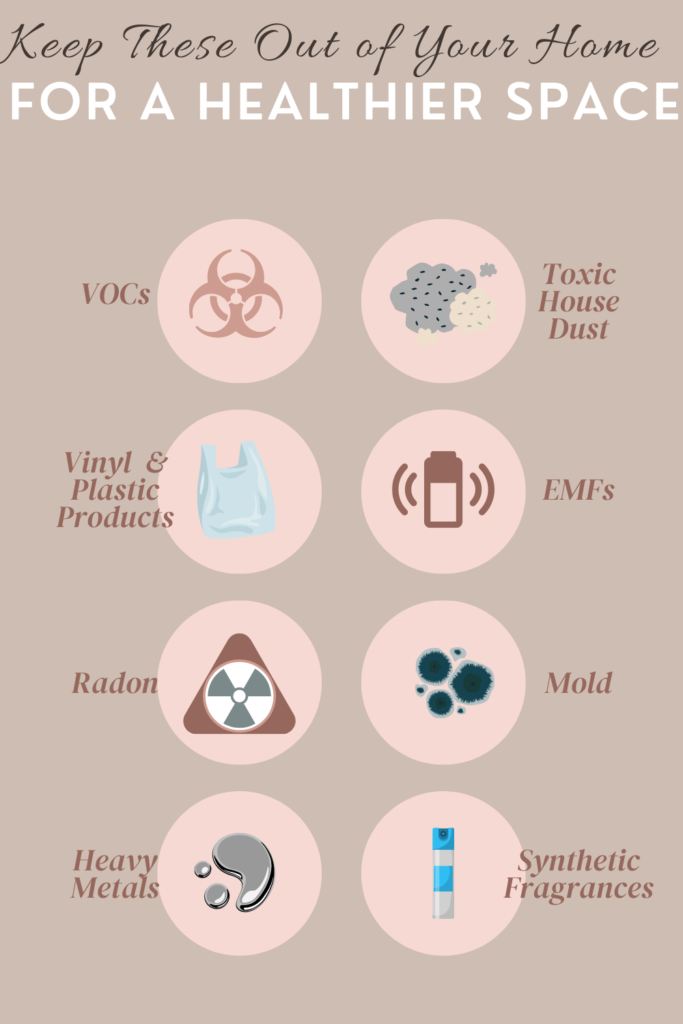
Radon: If you live in an area that has high levels of radon, you’ll want to have your home tested for radon every 2-5 years to ensure that the levels have not changed. Radon is the number one cause of lung cancer in non-smokers and it tends to pool in lower levels of homes. If you have a sleeping area in your lowest level or you have a home office in the lowest level, take extra care to test and then mitigate radon if necessary.
Mold: Mold has been linked to a number of growing health concerns and it’s incredibly difficult for the body to heal from. Make sure your space is free from mold by first doing a visual inspection around your home. Check for visible signs of mold in places that can get damp or have high levels of humidity. If you do find mold, the next step may be to have an air test done for mold inside your space. From there you can hire a company or DIY mold remediation depending on where it is in your home and how much there is.
Heavy Metals: Metals like lead are extremely common in household items ranging from our cookware to tiles in our flooring. Be aware of the products you bring into your home and do your best to confirm that they are in fact lead free. Lead is extremely harmful to children and can delay their development and cause issues with the neurological system. Our bodies don’t detoxify lead very well and so it can stick around and build up in the body relatively quickly.
Toxins from Fragrances: If there’s nothing else on this list that you do, do this one. Stop using synthetic fragrances inside your home. Wherever you can, remove things that contain added fragrances and remove products that have scent in them. This can range from air fresheners to laundry products to hand soaps. Toxins in fragrances are some of the worst and cause disruption to the endocrine system and hormone system. This disruption has been linked to reproductive issues, thyroid function issues and a suppressed immune system.
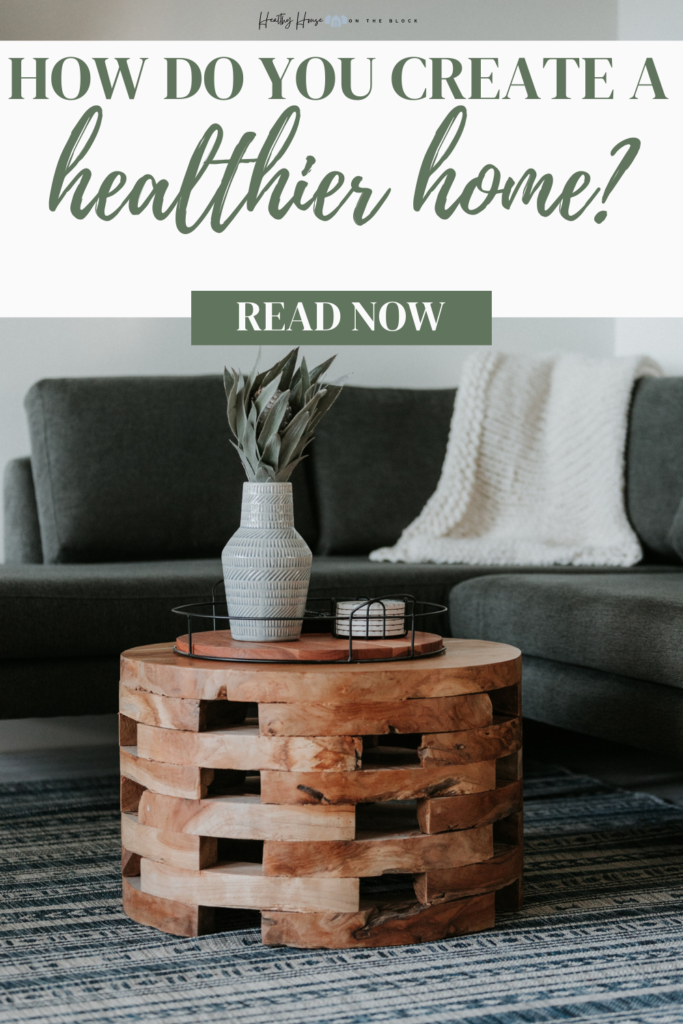
No matter what level of healthy your home is, the most important thing is that you’re cutting toxins where you can. We’re all working towards a healthier life and using your home to support your healthy lifestyle is one of the BEST tools. Keep it up and don’t forget to head to my topics page where you can work through rooms and areas one at a time with specific information.




